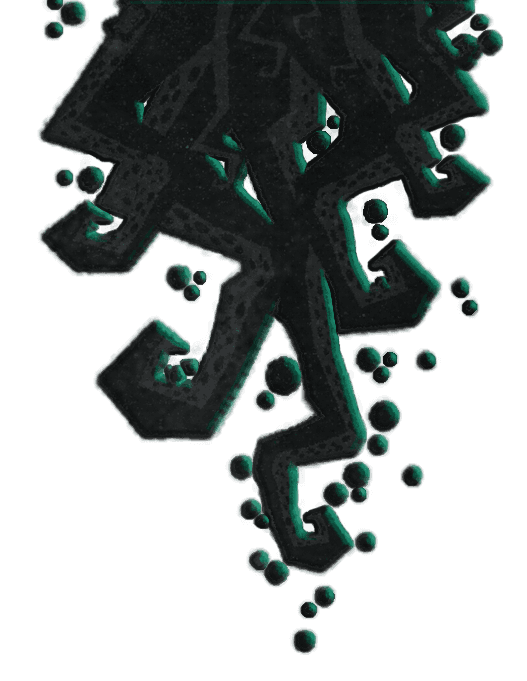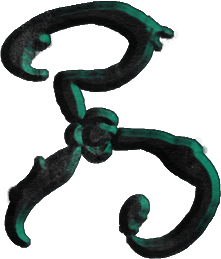

House Rules
Character Creation
• Level 1 Feat: Each character may start with a feat at level 1. This feat must tie into the character's backstory or make sense for them. Some feats may not be allowed at level one due to power level. I am also open to making custom feats for your character.
• Heirloom: You have the choice of starting with an heirloom, a special piece of equipment or magic item. This will be plot or backstory relevant and can tie into plot hooks. Ex: You have an amulet of sending that allows you to speak with a hidden organization tied to your families history.
• Custom Races: Each Lineage in Varian has been changed in some way and I have even made custom races for you to choose from. You can find more info here on the Lineage Page.
• Reworked Classes: I allow a few homebrew classes including most, if not all, of Laserllama's Reworked classes.
• Casting Stats: I am very flexible when it comes to character creation, fully believing in player choice. Due to this I am open to changing the primary stats for casters if it makes sense, such as an Intelligence based Bard, Wisdom Warlock, etc.
Combat
• Critical Hits: I use the deadlier critical hits ruling. Critical dice deal Max damage then you roll the extra dice. Ex: A damage roll of 1d6+3 that crits will be 1d6+6+3 instead of 2d6+3.
• Health Potions: Health potions can be drunk with a bonus action and you can use on of your attack actions to throw a potion at an ally. If you instead use a full action to drink a health potion it heals for max HP.
• Flanking: Flanking a creature does not impose advantage. Instead it gives a flat +2 to your attack roll.
• Moment's of Glory: Sometimes within combat you will get a moment of glory. MoG's can happen thanks to a crit, particularly well thought out plan, or even combo attacks between players. MoG's give an additional helping hand to you and allow you to look cool. Such as a critical hit disarming an enemy. I will describe what the MoG does, and allow you to describe how it happens.
• Death Saves: Death saving throws are rolled in private between the DM and the downed player. The rest of the party does not know the outcome. This brings more urgency to helping your harmed ally. Additionally, going down is taxing and hard on the body. After your second time going down in one day you will start to accumulate exhaustion.
• Downed: When you reach 0 HP you are not knocked unconscious, instead you are downed. While downed you can only move 10ft. a turn and take the help action. While downed you may choose to fail all your death saving throws to gain a heroic action. You may then take your turn as normal before dying at the end of your turn, attempting to help your allies with you last breath.
• Damage Types: I have created some custom damage types that have special effects. Some examples are Void damage, that reduces max HP and cannot be magically healed, you can only heal this damage through a long rest. These damage types are exceedingly rare and special. For the purposes of Bear Totem Barbarian you are still resistant to all special damage types except Veil damage which specifically cannot be resisted by anything.
General Rules
• Rest & Sanctuaries: Narratively the resting rules can be weird at times, such as recovering from near death with one nights sleep. So I have changed these slightly. A short Rest still takes 1 hour, while a long rest takes 3 days. This makes short rests more common and allows you all downtime to do things such as crafting or Roleplaying between sessions. Additionally, a Long rest can only be taken within a sanctuary. A sanctuary is any place that has food, heat, a place to sleep, and is somewhat safe. Most sanctuaries can be found only within towns and cities, but some classes or equipment allow one to create a sanctuary. For example you may be able to clear out a bandit fort and temporarily turn it into a sanctuary for the purposes of resting.
• Advantage/Disadvantage: Advantage and Disadvantage don’t just cancel out. Instead whichever source is higher is what you have. So if you have one source of advantage, but two sources of Disadvantage then you would roll with Disadvantage instead of a straight roll and Vice Versa.
• Spell Points: I like use the spell points variant rule. With this rule instead of having spellslots you have a number of spellpoints that can be spent on spells. Each level of spell costs more points and when you run out of points you can sacrifice your HP to cast a spell instead. This gives casters some more flexibility with their spells and helps the narrative dissonance of having enough power to cast a 5th level Wall of Fire spell, but not enough power to cast a 1st level shield.
• Help: To use the Help action on a skill check you must have at least proficiency in the skill.
• Scrolls: Anyone Can use a magic Scroll as long as it is identified. If the spell is not on your class spell list then you must make a DC 10 + spell level Arcana check.
• Magic Items: Magic Items can be difficult to come by at times. Common and Uncommon can be found for sale by merchants within different settlements, however rare and above are different. You may need to find a collector to buy from or, more likely, you will need to acquire the materials needed to craft the item. For example: if you wish to get a high level poison sword you may need to hunt down a chimera and harvest its stinger to craft the weapon.
• Afflictions: Afflictions are special magical diseases that affect both the physical and spiritual bodies of a character. They cannot be healed with normal means or even most magic. Some enemies attacks or environmental factors may give you a stack of an affliction. Afflictions come with mechanical benefits and drawbacks, as well as changing your physical appearance.
Example Affliction: The Ruby Blight
Stack 1: Your skin begins to crack open and fill with veins of pure Ruby. These blighted rubies distort gravity, causing small objects such as pebbles to float when near you.
Stack 2: These rubies begin to form clusters on your skin, slowly crystallizing you. Slightly larger objects may float near you.
Stack 3: Your connection to the Ruby Blight is fully established. You can use this to partially distort Gravity. You gain the use of the Mage Hand spell, though it is invisible for you. However, when you use these features you must make a DC 15 constitution saving throw or be violently thrown 20ft. Into the air.
Stack 4: Parts of your body have become pure Ruby and the Blight Authority courses through you. The crystallization of your body makes you tougher. Increase your AC by 1. However, for every long rest, you must roll 1d20. On a result lower than 5, you are infected by the Blight for the day. You are erratic and gain a random madness and Supernatural mutation for this day.
Stack 5: You are transformed by the Ruby Blight and gravity trembles around you. One of your limbs or a part of your body may be fully crystalized and detach from you, floating around you just like the pebbles. You gain full access to the Telekinetic Feat and a free casting of the Gravity Sinkhole spell. However, whenever you use these features you must make a DC 15 Charisma save or give into the Blight Authority. You will be compelled to listen to one demand of the Ruby Blight and must complete this command no matter what.
While I prefer these rules and stick to them, some rules such
as spellpoints and Rests are open for discussion.
© 2016-2023. All rights Reserved EldritchDM.


